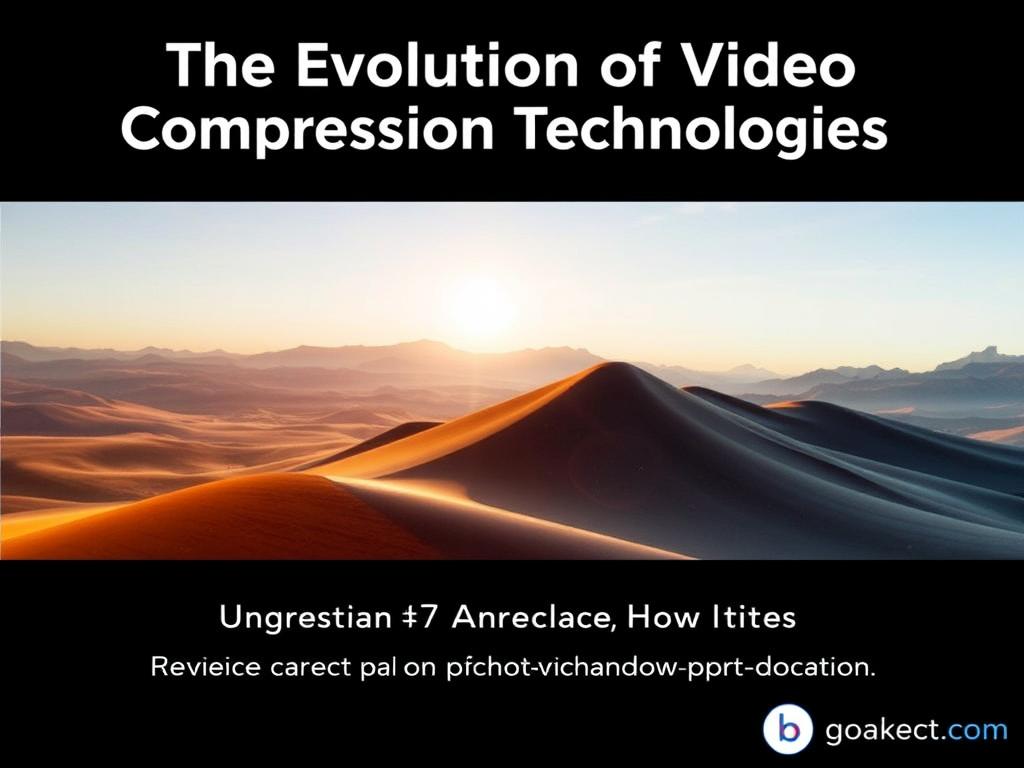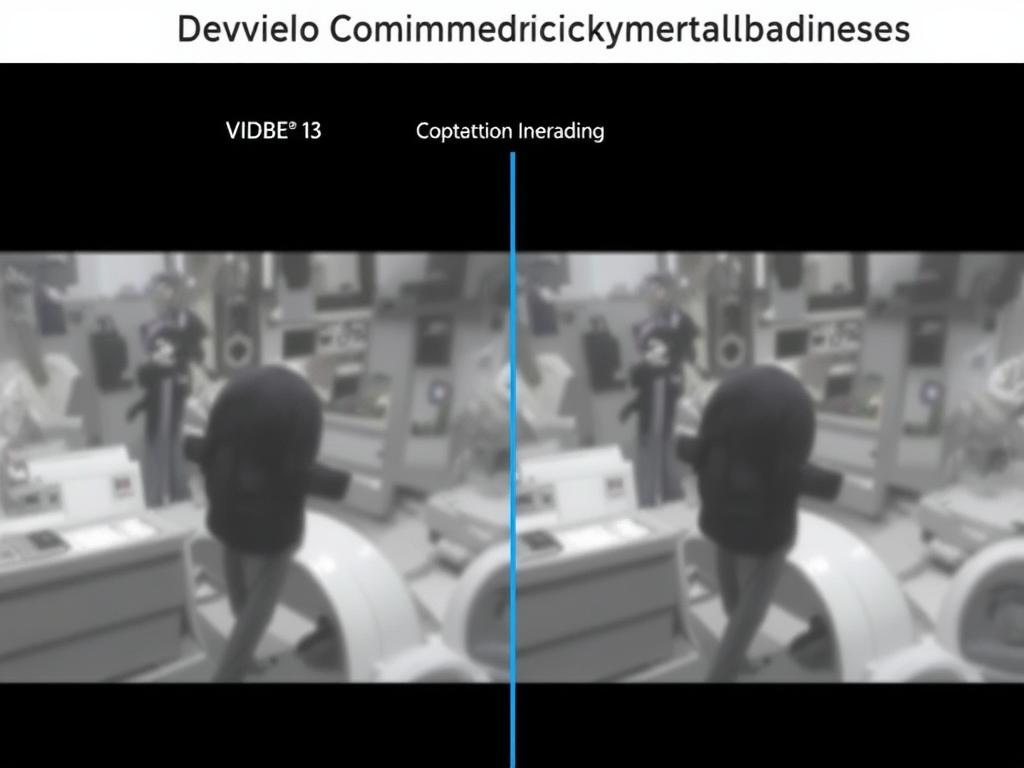Video compression technologies have dramatically transformed how we capture, store, and share visual content. It’s one of those behind-the-scenes wonders that keeps our streaming movies smooth, video calls clear, and devices from bursting under the weight of massive data. But how did we get here? The journey from bulky analog tapes to sleek AI-powered codecs is nothing short of fascinating. In this article, we’ll explore the evolution of video compression technologies, tracing their development, breakthroughs, and where they might be heading. Whether you’re a curious consumer or a tech enthusiast, you’ll gain a clearer picture of the innovations that make modern video possible.
The Origins: Analog Era and Early Digital Compression

Before the digital age, video was predominantly stored on analog formats like VHS tapes, Betamax, and broadcast signals. These formats relied on continuous signals rather than discrete data, making compression nonsensical since storage and bandwidth were based on physical tape length and analog transmission. The real breakthrough began with the advent of digital video, which opened the door for encoding and compressing data efficiently through algorithms.
Early video compression technologies focused on reducing frame size and resolution rather than sophisticated codec algorithms. Techniques like pulse code modulation (PCM) helped digitize analog signals, but file sizes remained enormous. As digital storage became affordable, the race was on to develop better compression codecs that could preserve quality without demanding too much memory or bandwidth.
Key Milestones in Video Compression Codecs
Fast forward to the late 20th and early 21st centuries, and the landscape of video compression exploded with innovation. Several key milestones stand out in the evolution of video compression technologies:
- MPEG-1 and MPEG-2: Pioneers in digital video compression, these standards made possible the rise of video CDs and DVDs. MPEG-2, in particular, supported broadcast-quality video and is still used in digital television.
- H.264 (AVC): Introduced in the early 2000s, H.264 revolutionized video streaming by providing much better compression efficiency. It enabled streaming services and HDTV broadcasts without demanding excessive bandwidth.
- HEVC (H.265): The successor to H.264, offering roughly double the compression efficiency. HEVC became essential for 4K video content and UHD broadcasting.
- VP9 and AV1: Open-source codecs developed by tech giants like Google and the Alliance for Open Media. These codecs address the growing demand for high-quality, royalty-free video compression for streaming platforms like YouTube and Netflix.
- AI-Powered Codecs: The latest frontier involves leveraging artificial intelligence and machine learning to dynamically optimize compression without compromising image quality.
Comparing Popular Codecs: Efficiency & Usage
To better understand the progression, here’s a helpful comparison table outlining some popular video codecs and their characteristics:
| Codec | Year Introduced | Compression Efficiency | Common Usage | License Type |
|---|---|---|---|---|
| MPEG-2 | 1995 | Low | DVDs, Digital TV | Proprietary |
| H.264 (AVC) | 2003 | Medium to High | HD Streaming, Blu-ray | Patent Royalties |
| HEVC (H.265) | 2013 | High | 4K Streaming, UHD TV | Patent Royalties |
| VP9 | 2013 | High | YouTube, Web Streaming | Royalty-Free |
| AV1 | 2018 | Very High | Next-gen Streaming, Mobile | Royalty-Free |
How Video Compression Technologies Work

Many people wonder: how does video compression actually work? At its core, video compression technologies exploit the fact that consecutive frames in a video are often very similar. Rather than storing every pixel in every frame, codecs use mathematical techniques to store only the changes between frames, removing redundant information.
Two main types of compression methods exist:
- Spatial Compression (Intra-frame): Compresses each individual frame by reducing redundancy within the frame itself, similar to how JPEG compresses images.
- Temporal Compression (Inter-frame): Looks at differences between consecutive frames and encodes changes, which drastically reduces the amount of data needed.
Additionally, advanced algorithms consider color spaces, motion estimation, and psycho-visual models that accommodate how humans perceive video quality. This intricate balance between compression rate and visual clarity defines the overall effectiveness of any video compression technology.
The Role of AI and Machine Learning in Modern Video Compression

So what does the future hold? The rise of AI-powered codecs is changing the game. Traditional video compression relies on static mathematical models, but AI enables dynamic learning and optimization tailored to content characteristics. This means codecs can adaptively compress different video regions with varying complexity, significantly pushing the limits of compression efficiency.
For example, AI-based algorithms can detect important areas like faces or text and allocate higher quality to those regions, while more abstract or low-detail zones get compressed more aggressively. Furthermore, machine learning models help improve motion prediction and artifact reduction, resulting in better image quality at lower bitrates.
Many researchers and companies are exploring deep neural networks in video compression pipelines, hinting at a future where video streaming could be faster, cheaper, and more accessible worldwide.
The Challenges Ahead in Video Compression Evolution
Despite impressive advances, the evolution of video compression technologies faces several challenges. Here are some key points:
- Computational Complexity: Advanced codecs and AI-powered models require powerful hardware, making them less accessible for older devices.
- Licensing and Patents: Royalty fees associated with popular codecs can inhibit adoption and innovation, especially in developing markets.
- Standardization: Fragmentation of codec standards may delay mass adoption of next-generation compression technologies.
- Balancing Quality and Compression: Finding the sweet spot between video quality and file size remains a technical and artistic challenge.
Why Video Compression Matters for Consumers and Industry
You might be wondering why all this video compression talk matters to you. Simply put, video compression technologies shape the digital experiences we take for granted every day. For consumers, better compression means:
- Faster video streaming with fewer buffering interruptions.
- Lower data usage, especially important with mobile internet plans.
- Sharper video quality, even on smaller screens.
- More affordable content delivery services due to reduced bandwidth costs.
For industries such as entertainment, broadcasting, telecommunication, and security, advancements in video compression translate into scalable infrastructure, innovative products like VR and 8K streaming, and enhanced user engagement worldwide.
Looking Ahead: The Future Roadmap
The evolution of video compression technologies is far from over. Researchers predict growing convergence between AI, cloud computing, and compression algorithms. Some trends to watch include:
- Real-time AI Encoding: Ultra-efficient, low-latency video compression for live streaming and interactive applications.
- Energy-Efficient Codecs: Designing algorithms that minimize power consumption for mobile and embedded devices.
- Enhanced Immersive Media Support: Better compression for 360-degree videos, augmented reality, and holographic content.
- Universal Codec Adoption: Efforts to simplify and unify codec standards to improve interoperability across platforms.
As these technologies mature, the quality and accessibility of video content worldwide will continue to improve, fundamentally changing how we communicate and entertain ourselves.
Conclusion
Video compression technologies have come a long way from the analog days to today’s AI-powered codecs, fundamentally shaping our digital world. Each innovation brought better efficiency, quality, and accessibility, enabling the rich multimedia experiences we enjoy daily. As AI and machine learning become further integrated, the future promises even smarter, faster, and more adaptable compression methods. For consumers and industries alike, understanding this evolution helps appreciate the technical magic that keeps our videos smooth, clear, and ever more captivating. Whether you’re streaming your favorite show or joining a video call with loved ones, remember that video compression technology is quietly working hard behind the scenes to make it all possible.